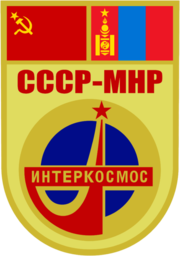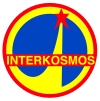
Salyut 6, DOS-5, was a Soviet orbital space station, the eighth station of the Salyut programme. It was launched on 29 September 1977 by a Proton rocket. Salyut 6 was the first space station to receive large numbers of crewed and uncrewed spacecraft for human habitation, crew transfer, international participation and resupply, establishing precedents for station life and operations which were enhanced on Mir and the International Space Station.

Salyut 7 was a space station in low Earth orbit from April 1982 to February 1991. It was first crewed in May 1982 with two crew via Soyuz T-5, and last visited in June 1986, by Soyuz T-15. Various crew and modules were used over its lifetime, including 12 crewed and 15 uncrewed launches in total. Supporting spacecraft included the Soyuz T, Progress, and TKS spacecraft.

Soyuz 29 was a 1978 crewed Soviet space mission to the Salyut 6 space station. It was the fifth mission, the fourth successful docking, and the second long-duration crew for the orbiting station. Commander Vladimir Kovalyonok and flight engineer Aleksandr Ivanchenkov established a new space-endurance record of 139 days.

Soyuz 28 was a March 1978 Soviet crewed mission to the orbiting Salyut 6 space station. It was the fourth mission to the station, the third successful docking, and the second visit to the resident crew launched in Soyuz 26.

Soyuz 30 was a 1978 crewed Soviet space flight to the Salyut 6 space station. It was the sixth mission to and fifth successful docking at the orbiting facility. The Soyuz 30 crew were the first to visit the long-duration Soyuz 29 resident crew.
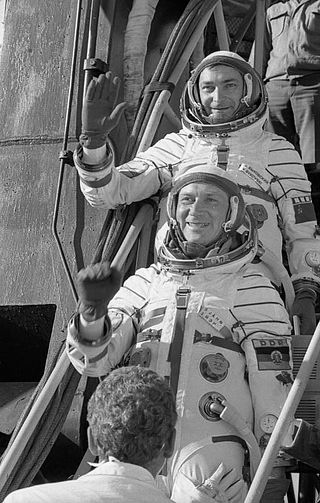
Soyuz 31 was a 1978 Soviet crewed space flight to the Salyut 6 space station. It was the seventh mission to and sixth successful docking at the orbiting facility. The Soyuz 31 crew were the second to visit the long-duration Soyuz 29 resident crew.
Soyuz 35 was a 1980 Soviet crewed space flight to the Salyut 6 space station. It was the 10th mission to and eighth successful docking at the orbiting facility. The Soyuz 35 crew were the fourth long-duration crew to man the space station.

Soyuz T-2 was a 1980 Soviet crewed space flight to the Salyut 6 space station. It was the 12th mission to and 10th successful docking at the orbiting facility. The Soyuz T-2 crew were the second to visit the long-duration Soyuz 35 resident crew.

Soyuz 38 was a human spaceflight mission conducted by the Soviet Union during September, 1980. The Soyuz spacecraft brought two visiting crew members to the Salyut 6 space station, one of whom was an Intercosmos cosmonaut from Cuba.
Soyuz T-4 was a Soviet space mission which launched the crew of Salyut 6 EO-6, the sixth and final long-duration crew of the Salyut 6 space station. It was launched on 12 March 1981 and docked with the station the next day. During their stay, the EO-6 crew was visited by Soyuz 39 and Soyuz 40. Soyuz T-4 returned to Earth on 26 May 1981; its crew were the last to have inhabited Salyut 6.

The Soyuz 40 mission was a 1981 Soviet crewed spaceflight and the final flight of the Soyuz 7K-T spacecraft. It was a collaboration between the Soviet Union and Romania.

Soyuz T-12 was the seventh crewed spaceflight to the Soviet space station Salyut 7. The name "Soyuz T-12" is also the name of the spacecraft used to launch and land the mission's three-person crew. The mission occurred in July 1984, during the long-duration expedition Salyut 7 EO-3. During the mission, crew member Svetlana Savitskaya became the first woman to ever perform a spacewalk, and the potential Buran space shuttle pilot, Igor Volk, was given spaceflight experience. Unlike many Soyuz visiting missions, the Soyuz lifeboats were not swapped, and the crew returned to Earth in the same spacecraft in which they launched.
Soyuz T-13 was a Soyuz mission, transporting personnel to the Soviet space station Salyut 7. The eighth expedition to the orbital station, the mission launched from Baikonur Cosmodrome, atop a Soyuz-U2 carrier rocket, at 06:39:52 UTC on June 6, 1985. It is of note because it marked the first time a spacecraft had docked with a 'dead' space station, and the first time such a station had been returned to operational status following repairs.

Aleksandr Sergeyevich Ivanchenkov is a retired Soviet cosmonaut who flew as Flight Engineer on Soyuz 29 and Soyuz T-6, he spent 147 days, 12 hours and 37 minutes in space.
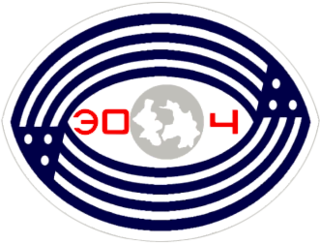
Mir EO-4 was the fourth long-duration expedition to the Soviet space station Mir. The expedition began in November 1988, when crew members Commander Aleksandr Volkov and Flight Engineer Sergei Krikalev arrived at the station via the spacecraft Soyuz TM-7. The third crew member of EO-4, Valeri Polyakov, was already aboard Mir, having arrived in August 1988 part way through the previous expedition, Mir EO-3.
Salyut 6 EO-1 was a Soviet long duration space expedition, the first to dock successfully with the space station Salyut 6. The two person crew stayed were in space for a record setting 96 days, from December 1977 to March 1978. The expedition was the start of what would be the semi-permanent occupation of space by the Soviets.
Soyuz 6 EP-1 was a 1978 Soviet crewed space flight to the orbiting Salyut 6 space station, during the expedition EO-1. It was the third crewed flight to the station, and the second successful docking. It was also the first crew to visit an occupied station and marked the first time that three spacecraft were docked together. The launching spacecraft was Soyuz 27, and the crew of EP-1 are often referred to as the Soyuz 27 crew.

Mir EP-2 was a visiting expedition to the Mir space station conducted in June 1988 by cosmonauts Anatoly Solovyev, Viktor Savinykh and Aleksandr Aleksandrov. Launched aboard the Soyuz TM-5 spacecraft, the crew spent ten days in space before returning to Earth aboard Soyuz TM-4. The mission occurred while the EO-3 crew were aboard Mir.
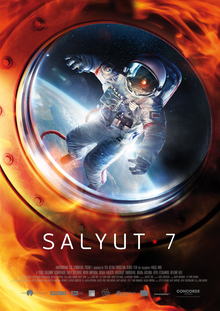
Salyut 7 is a 2017 Russian disaster film directed by Klim Shipenko and written by Aleksey Samolyotov, the film stars Vladimir Vdovichenkov and Pavel Derevyanko. The story is based on the Soyuz T-13 mission in 1985, part of the Soviet Salyut programme; it was the first time in history that a 'dead' space station was docked with, and brought back into service.
